| Home | Nature Weekly Index |
13 September 2015 | Nature in Pots |
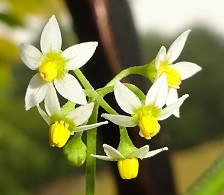
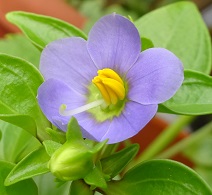 Over the last few weeks, there were a few uncommon flowers that started blooming along the balcony in my potted garden. The first
one was a wild plant known as Black Nightshade (Solanum americanum). Back
in 2013, I wrote a short note on my experience growing this plant in a pot.
That was the time that I attempted to get a better understand over the confusion of its name. The current plant was likely to be a
descendant of the same plant from 2013.
Over the last few weeks, there were a few uncommon flowers that started blooming along the balcony in my potted garden. The first
one was a wild plant known as Black Nightshade (Solanum americanum). Back
in 2013, I wrote a short note on my experience growing this plant in a pot.
That was the time that I attempted to get a better understand over the confusion of its name. The current plant was likely to be a
descendant of the same plant from 2013.
The second one was a small ornamental plant, Persian Violet (Exacum affine) that I brought back afew years back. The way that the plant was spreading around my potted garden then gave me the impression that it was going to be an entrenched resident. But, it was not to be so. After thriving for several months, the last remaining descendant eventually died 2 years later in 2013. When I saw a young seedling a few weeks back, I was still not certain of its survival chance, let alone flowering. I was so glad that it eventually bore flowers this week. Till this point, I had not seen the seeds of this plant. It must be very tiny.
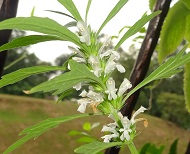
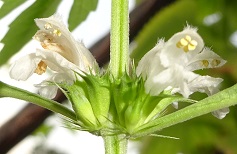 The third one was a well-known herb, Chinese Motherwort (Leonurus japonicus).
A few years back, someone was checking with me on the seeds of this plant. Subsequently, I obtained a pot of the plant to collect
the seeds and it was relatively straightforward. The plant died naturally after reaching its expected life span. Many of the seeds
had obviously dropped into the soil. As I continue to recycle the soil, some seeds did sprout spontaneously over time, usually
around 3 to 5 plants. This time round, I had 3 of them. The young plant, with heart-shaped leaves tend to stay in that stage for a
few weeks before a sudden surge in height to start the flowering process.
The third one was a well-known herb, Chinese Motherwort (Leonurus japonicus).
A few years back, someone was checking with me on the seeds of this plant. Subsequently, I obtained a pot of the plant to collect
the seeds and it was relatively straightforward. The plant died naturally after reaching its expected life span. Many of the seeds
had obviously dropped into the soil. As I continue to recycle the soil, some seeds did sprout spontaneously over time, usually
around 3 to 5 plants. This time round, I had 3 of them. The young plant, with heart-shaped leaves tend to stay in that stage for a
few weeks before a sudden surge in height to start the flowering process.
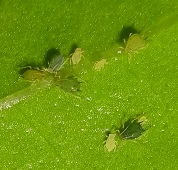
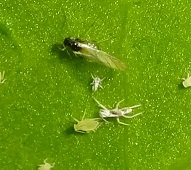
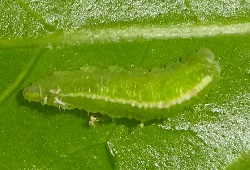 While doing my usual round of examining my potted plants, I was surprised to find was two larva of syrphid fly, also known as flower
or hover fly, on a hibiscus plant. The hibiscus plant was a new addition, just a few weeks back, for a specific purpose. As
expected, aphids started appearing very soon on its leaves and flower buds. Based on
my previous experience, try getting rid of aphid is a futile exercise. So, I decided to
leave it to nature to take its course. Two days back, while observing the aphids, with some having wings, I saw 2 small green
caterpillar-like creatures on the leaves. The area that both of them resided was devoid of aphids. The first thought that came
through my mind was that they might be feasting on the aphids. Sure enough, they were aphid predators. But, I doubt they are able
to eliminate all the aphids, which have now appear on every spot of the plant.
While doing my usual round of examining my potted plants, I was surprised to find was two larva of syrphid fly, also known as flower
or hover fly, on a hibiscus plant. The hibiscus plant was a new addition, just a few weeks back, for a specific purpose. As
expected, aphids started appearing very soon on its leaves and flower buds. Based on
my previous experience, try getting rid of aphid is a futile exercise. So, I decided to
leave it to nature to take its course. Two days back, while observing the aphids, with some having wings, I saw 2 small green
caterpillar-like creatures on the leaves. The area that both of them resided was devoid of aphids. The first thought that came
through my mind was that they might be feasting on the aphids. Sure enough, they were aphid predators. But, I doubt they are able
to eliminate all the aphids, which have now appear on every spot of the plant.